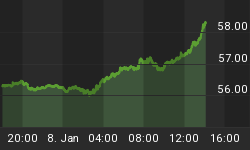True to its name, Robinhood—the zero-fee trading app—is for the people, and loved by the people. It has successfully made stock trading accessible to absolutely anyone and everyone, and now it wants to go public. The only thing it’s missing is a CFO and a regulatory blessing.
For the novice trader or the would-be dabbler, nothing is better—or easier—than Robinhood. And while it’s not exactly stealing from the rich to give to the poor, it is leveling the playing field a bit.
As of this month, Robinhood is on the lookout for a CFO as it undergoes a series of audits by the SEC and FINRA, the Financial Industry Regulatory Authority. Once it passes regulatory compliance, the IPO can move forward.
No one thought they would get this far charging zero fees for trading when they launched in 2013. But the contrarians in the room were soon stifled. In fact, Robinhood didn’t just survive, it thrived.
In May, they even surpassed E-Trade in term of number of users. Now it has over 4 million users, while E-Trade had 3.7 million as of May.
That same month, Robinhood raised over $470 million in funding rounds, leading to a valuation of $5.6 billion.
Then, in February, Robinhood started offering cryptocurrency trading services. Six months later, there are as many as 5 million users trading crypto through the app.
Now, according to Bloomberg via Cointelegraph, it’s even in talks with the U.S. Office of the Comptroller of the Currency for a banking license.
So with a $5.6-billion valuation for a free trading app, how does Robinhood make its money?
That’s easy: It’s not all free. If you’re not a novice and you want margin trading, Robinhood Gold has a starting cost of $6 per month. Like a bank, it also collects interest on the cash and stocks in customer accounts. Related: China’s Richest Man Leaves Alibaba
When Robinhood went crypto in February, that sparked speculation that it might ICO rather than IPO—but that speculation has now been put to rest. An IPO will give Robinhood mainstream legitimacy, and that’s what it’s always been about.
This IPO should garner a lot of investor interest. The positives are lining up, especially compared to trading-app rivals. Keep in mind that not only did Robinhood surpass E-Trade in May in terms of number of users, but it also did it with a skeleton crew: E-Trade has some 4,000 employees to pay, while Robinhood has only around 250.
So, that’s three revenue streams, soaring user numbers—especially since they launched crypto-trading—and a nice, low overhead.
The bold leap by Robinhood’s founders to change the way trading is done is working, too. It certainly ups the ante for trading houses. In fact, JPMorgan Chase felt compelled to create its own zero-fee trading platform last month, instead of charging almost $25 per trade.
Thus, Robinhood stays true to its name, and still manages to fascinate investors.
So what’s next? Ahead of an IPO, Robinhood has just added 250 global stocks to its portfolio. In the words of Robinhood co-founder Vlad Tenev, speaking to CNBC, one remaining missing link was lack of exposure to stocks outside the U.S. “We looked at what customers were searching for and not getting.”
"Our strategy has always been listen to the customer and work on building new products to make their lives easier," Tenev said.
By Michael Kern for Safehaven.com
More Top Reads From Safehaven.com

















